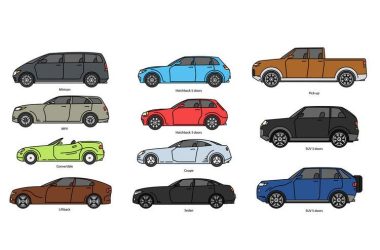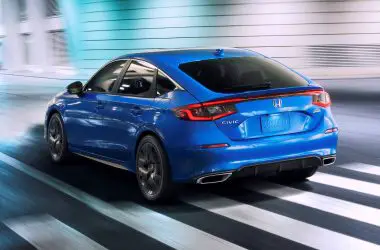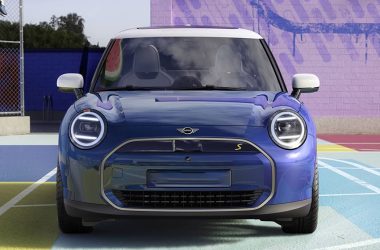BMW is known for making some of the finest driving machines available, offering a range of luxury performance sedans, SUVs, and sports cars. However, there is one glaring omission from their US model lineup – wagons and hatchbacks.
Despite a vocal minority of driving enthusiasts clamoring for these more practical body styles, BMW has continued to keep them out of the American market. In this article, we’ll explore the reasons behind this decision and whether we might eventually see these versatile vehicles available to US buyers.
The Wagon and Hatchback Models Not For Sale in the US
While American buyers have access to BMW’s full range of sedans and SUVs, our European and Australian counterparts get a few additional options we are sorely missing out on. This includes the practical and sporty wagon and hatchback versions of popular models like the 3-Series, 5-Series, and others. Specific models available abroad but not in the US include:
- 3 Series Touring wagon
- 5 Series Touring wagon
- 2 Series Gran Tourer hatchback
- 1 Series hatchback
These longroof body styles provide all the luxury, refinement and driving dynamics BMW is known for while adding extra practicality and cargo space. For driving enthusiasts with active lifestyles, wagons and hatches check a lot of boxes over bulkier SUVs. It’s easy to see the appeal for US customers.
Who’s Asking for Wagons and Hatches?
On internet forums and in enthusiast circles, the call for BMW to bring over their wagon and hatch variants seems quite loud. These models cater perfectly to their desires. However, how much demand actually exists among regular US consumers? The reality is that only a vocal minority of auto enthusiasts are clamoring for longroofs. The general new car buying population remains largely disinterested.
| Body Style | 2021 US Sales |
|---|---|
| SUVs | 6.7 million |
| Sedans | 2.8 million |
| Wagons | 124,000 |
As this sales data shows, wagons make up only a tiny fraction of the US auto market. For a mainstream brand like Subaru, selling 25,000 Outback wagons per year is solid business. But for a luxury brand like BMW, such low volumes wouldn’t justify the costs of federalizing their European wagons for US sale.
The Cost of Bringing Wagons Stateside
Why doesn’t BMW go through the process of certifying their wagon and hatch models and bringing them to the US anyway, just to satisfy vocal enthusiast demand? The reasons are largely economic. Federalizing a foreign-market vehicle for US sale requires extensive engineering and testing to comply with safety and emissions regulations. BMW would need to crash test multiple examples of each model and powertrain variant. They estimate this process can cost upwards of $10 million per model!
Given the low sales wagons achieve in the US luxury market, it’s unlikely BMW could recoup these upfront regulatory costs anytime soon. The business case simply doesn’t support spending millions to sell a few thousand wagons per year. Until more Americans express interest in the longroof lifestyle, BMW will likely continue skipping the certification costs.
Americans Have Been Slow to Embrace Wagons
So why hasn’t wagon demand grown stronger in the US market? Consumer preferences and psychology play a big role. Many Americans still associate wagons with the big, lumbering “station wagons” their parents drove decades ago. The body style carries an uncool, family-oriented stigma compared to sleeker sedans and muscular SUVs.
Hatchbacks face a similar perception problem. The American public tends to associate hatches with cheap econoboxes, while European buyers view them as perfectly stylish and upscale. BMW sold over 1 million 1-Series hatches globally last decade, but couldn’t give them away during their brief US availability.
Automakers have gradually swayed American perceptions on vehicles like minivans and smaller crossovers. But doing the same for wagons would require changing deeply ingrained consumer attitudes and preferences. Until public demand shifts, BMW will cater its US lineup to what sells best here – luxury SUVs and sleek sedans.
Do Any Luxury Wagons Sell Well in the US?
While the mainstream wagon market remains tiny, a few luxury automakers have managed to carve out a niche. Brands like Volvo, Audi and Mercedes-Benz now offer raised, crossover-like wagons they’ve marketed as stylish alternatives to bulky SUVs. The latest iterations of the Volvo V90, Audi A6 Allroad and Mercedes E-Class All-Terrain have found moderate success.
| Luxury Wagon | 2021 US Sales |
|---|---|
| Volvo V90 | 4,086 |
| Audi A4/A6 Allroad | 6,305 |
| Mercedes E-Class All-Terrain | 3,896 |
These sales volumes are mere fractions compared to BMW’s 103,000 X3 and 59,000 X5 SUVs sold. But the fact that raised luxury wagons can sell 4,000-6,000 units annually hints at some untapped potential. If consumer interest keeps growing, we may eventually see BMW decides to federalize their touring models.
BMW’s Previous Failed Experiments
Over the past two decades, BMW has made some limited attempts to gauge US demand for hatchbacks and wagon variants. Small test batches were brought over in the early 2000s. But slow sales led to quick discontinuation.
In the early 2000s, BMW sold a few thousand 3-Series Compacts, essentially a European hatchback model. Despite positive reviews, the two door hatch failed to find an audience. More recently, BMW tried again by offering wagon versions of the previous generation 5-Series and 3-Series for a few model years. However these too saw minimal interest, with BMW selling less than 1,000 wagons per year.
These failed experiments reinforce the challenge of changing consumer perceptions. Unless a model achieves strong sales right away, BMW is reluctant to make the ongoing investment to keep lesser-selling body styles available in the US market.
The Outlook for Future Availability
So when can US BMW fans expect to finally get access to the versatile and fun wagon and hatch variants available globally? The answer is a tentative “maybe someday.” If consumer preferences gradually shift as they have toward smaller crossovers, BMW would be foolish not to capitalize on growing wagon demand.
For now, the volumes are still too low to justify the millions in federalization costs. But if the success of brands like Volvo and Subaru starts eating into BMW SUV sales, management might see a business case emerge for broadening their body style lineup. BMW has proven they can build some of the finest wagons and hatches in the world. The ball is in the court of the American car buying public to create the demand to make them a reality here.
Wagons and Hatches Build on BMW’s Strengths
If BMW did begin offering its wagon and hatchback models in the US, they’d be building on the brand’s core strengths. Characteristics that define the BMW driving experience – responsive handling, excellent steering feedback, and powerful engines – would translate seamlessly to these more practical body styles.
Wagons like the 3 Series Touring provide the same perfect 50/50 weight balance and near-perfect suspension tuning as their sedan counterparts. The low center of gravity and optimized weight distribution gives BMW wagons incredible stability and cornering reflexes. Hauling camping gear or track day equipment is no obstacle for these ultimate driving machines.
Under the hood, US-bound wagons and hatches would feature BMW’s latest turbocharged power plants. Potent engines like the B58 3.0L straight-six producing over 300 horsepower would imbue these longroofs with serious performance. BMW would ensure their sporty driving dynamics are not lost simply by adding extra cargo doors.
Practical Luxury for Outdoor Lifestyles
Part of what makes wagons and hatches so enticing for active families is their ability to blend luxury and practicality. Swapping out a trunk for a squared-off cargo hold expands loading flexibility and capacity without sacrificing interior refinement.
With the rear seats folded down, a 3 Series wagon provides over 50 cubic feet of cargo volume – room enough for camping, cycling, skiing and any other gear-hauling adventures. The low liftover height makes loading bulky or heavy objects easy, avoiding the strenuous climb up into a tall SUV.
Inside, these longroofs offer the same upscale cabins as their sedan counterparts, full of premium materials and technology. For those who need practicality but don’t want to sacrifice driving enjoyment and luxury, a wagon or hatch provides the perfect blend.
Wagons Can Be Stylish Too
One of the key perceptions BMW would need to change with US buyers is that wagons can be just as stylish and sleek as traditional sedans. While early American wagons evoked images of bulky family trucks, modern BMW Touring models are elegantly proportioned and sporty.
The latest 5 Series Touring design language blends a sleek sloping roofline with BMW’s signature short front overhang and elongated hood. From the front 3/4 view, one would be hard-pressed to tell a 5 Series wagon apart from its sedan sibling. The rear hatch is neatly integrated for a clean and polished look.
Inside, current BMW interiors feature upscale wood, leather and metal trim conveying the same sense of refined luxury expected of the brand. A tastefully designed wagon proves you can have practicality without sacrificing style and premium feel.
Wagons as Sporty Alternatives to SUVs
While wagons offer clear practicality advantages over sedans, how do they stack up against BMW’s popular SUV models? For driving enthusiasts, the low stance and optimized weight balance of a wagon provides key advantages over taller SUVs.
The latest BMW X3 weighs over 4,200 lbs compared to just 3,600 lbs for a 3 Series. The extra heft of the SUV leads to slower acceleration, higher fuel consumption and more cumbersome handling. Wagons deliver a more engaging driving experience closer to the brand’s sports sedan roots.
Lower roof lines and center of gravity also contribute to better stability in corners. Those who enjoy backroad carving or track days will appreciate a wagon’s nimbler reflexes. For sporty drivers with cargo needs, a wagon presents a winning alternative to SUVs.
Hatchbacks Can be Both Sporty and Practical
Where wagons excel at practical luxury, hatchbacks highlight BMW’s sporty ethos. Models like the 1-Series and 2-Series Gran Coupe hatchbacks form the sporty, affordable entry points into the brand.
The single rear hatch and abbreviated rear overhangs optimize weight distribution for agile handling. Under the hood, potent turbo four-cylinder engines provide plenty of power in a compact package. BMW’s famous perfect steering feedback remains a defining hatchback element.
At the same time, that rear hatch offers flexible cargo versatility. Hauling bikes, golf clubs or an airport trip’s worth of luggage is made easy. For those looking for an affordable driver’s car that’s also an everyday hatchback, these entry BMW models hit the nail on the head.
Hatchbacks Can Grow With Young Buyers
In addition to their inherent practicality and affordability, hatchbacks offer BMW an important opportunity to connect with younger buyers. As a gateway into the brand, they help attract new generations to the BMW experience early.
Younger professionals starting families and active lifestyles need the utility of hatchbacks and wagons. By offering affordable hatch options, BMW can establish loyalty and grow with customers over time. As needs change, hatchback drivers may desire a larger sedan or SUV while staying loyal to the brand.
Models like the 2-Series Gran Coupe offer a perfect entry point. A decade later, that same buyer may be ready for an X5 SUV while remaining a lifelong BMW owner. Capturing buyers early via hatchbacks pays dividends down the road.
Wagon and Hatch Rivals Find Success
If BMW still doubts the viability of wagons and hatches in the US, they need only look at rivals like Audi and Mercedes who have committed fully to these body styles. While sales pale compared to mainstream crossovers and SUVs, their success demonstrates a demand exists.
Audi in particular has captured real enthusiast cachet with their sportback models. The A5 Sportback and RS5 Sportback turn heads with their sleek, coupe-like profiles yet hatchback practicality. Younger buyers embrace these image-leading designs.
Even Mercedes has enjoyed modest success with niche wagons like the AMG E63 S wagon, a 603 horsepower cargo-hauler. When marketed as a stylish performing alternative to SUVs, Americans respond. BMW is leaving sales on the table by ignoring this proven formula.
BMW Missing Out on Growth Market
The American wagon and hatchback segments may still be small, but all metrics point to solid growth in the coming decades. As Millennials and Gen Z begin raising families, their preferences will shape the auto market.
These younger generations have demonstrated less interest in cars as status symbols, and greater desire for utility and lifestyle versatility. Hatches and wagons fit the bill perfectly, even at a premium level. By refusing to offer these body styles, BMW is missing out on an expanding market.
Now is the time for BMW to make inroads with younger buyers via affordable hatches, and capture their loyalty over the long term. With SUV dominance waning, the brand could see real profits down the road as interest in wagons re-emerges.
Wagons and Hatches Support Environmental Goals
In addition to changing consumer preferences, the auto industry’s environmental initiatives could boost the case for wagons and hatches. As brands push for greater sustainability and fuel efficiency, these practical body styles offer advantages.
Their lighter weight and lower, more aerodynamic profiles provide efficiency benefits over larger SUVs. Lower emissions and higher mpg ratings align with corporate average fuel economy (CAFE) standards and environmental stewardship efforts.
Hatchback and wagon models would help BMW reduce its overall fleet emissions profile and environmental impact. For an earth-conscious brand image, more sustainable vehicle offerings are critical.
BMW Missing an Opportunity
For a brand built on bold risk-taking and recognizing changing market winds, BMW seems uncharacteristically hesitant with wagons and hatches. The company that pioneered sports sedans and premium crossovers is missing an opportunity to lead once again.
With consumer preferences and industry trends pointing toward a hatch and wagon revival, now is the time to strike. Investing early in the longroofs Americans will soon ask for puts BMW at the forefront. The initial regulatory costs would quickly pay off in brand leadership and market share.
As younger buyers seek out versatile, sustainable vehicles that reflect their lifestyles, hatchbacks and wagons check every box. It’s time for BMW to once again transform the luxury vehicle space with bold action. The American wagon renaissance awaits.





